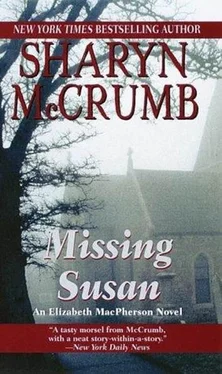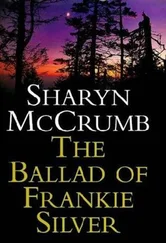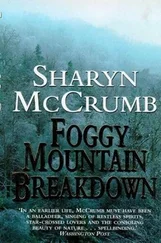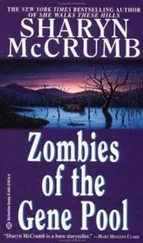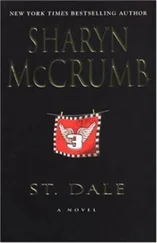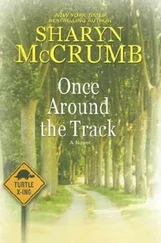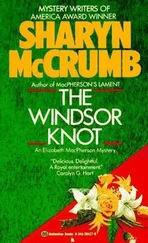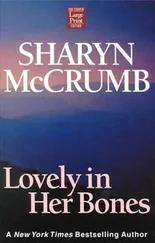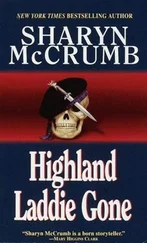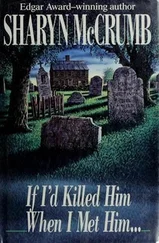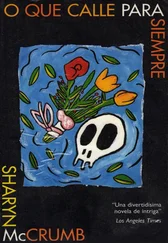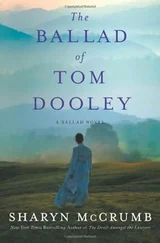Sharyn McCrumb - Missing Susan
Здесь есть возможность читать онлайн «Sharyn McCrumb - Missing Susan» весь текст электронной книги совершенно бесплатно (целиком полную версию без сокращений). В некоторых случаях можно слушать аудио, скачать через торрент в формате fb2 и присутствует краткое содержание. Жанр: Детектив, на английском языке. Описание произведения, (предисловие) а так же отзывы посетителей доступны на портале библиотеки ЛибКат.
- Название:Missing Susan
- Автор:
- Жанр:
- Год:неизвестен
- ISBN:нет данных
- Рейтинг книги:3 / 5. Голосов: 1
-
Избранное:Добавить в избранное
- Отзывы:
-
Ваша оценка:
- 60
- 1
- 2
- 3
- 4
- 5
Missing Susan: краткое содержание, описание и аннотация
Предлагаем к чтению аннотацию, описание, краткое содержание или предисловие (зависит от того, что написал сам автор книги «Missing Susan»). Если вы не нашли необходимую информацию о книге — напишите в комментариях, мы постараемся отыскать её.
Missing Susan — читать онлайн бесплатно полную книгу (весь текст) целиком
Ниже представлен текст книги, разбитый по страницам. Система сохранения места последней прочитанной страницы, позволяет с удобством читать онлайн бесплатно книгу «Missing Susan», без необходимости каждый раз заново искать на чём Вы остановились. Поставьте закладку, и сможете в любой момент перейти на страницу, на которой закончили чтение.
Интервал:
Закладка:
From the driver’s seat came Bernard’s short laugh. “Don’t bet on it, miss!”
An hour later Emma had to admit the truth of Bernard’s remark. The coach made its way out of the narrow streets of Winchester; from the A34 to the A303, a large modern motorway that took them across the chalk downs of Wiltshire and straight to Stonehenge. Straight to Stonehenge. As they approached the great neolithic monument, Maud Marsh said sadly, “I never pictured a highway going ten feet past the heelstone.”
“That was there in 1968,” said Emma, studying the scene. “But the fence wasn’t.”
“Vandals,” said Bernard over his shoulder. “Stonehenge draws loonies like a flame draws moths.”
He pulled the coach into the paved car park across the road from the great stone circle. It was already crowded with other tour buses and dozens of private cars. They stood in the lot beside the coach, braving the chill wind, while Rowan consulted his notes. “I have a pass here to get us in as a group,” he announced. “Everyone follow me, please.”
“They sell tickets?” asked Miriam Angel, sounding shocked and grieved. “To Stonehenge? We don’t charge people to go into the Lincoln Memorial.”
Bernard shrugged. “Maybe the Druids need the money.” He got back on board and adjusted his radio to a rock station to while away the tour time.
“It wasn’t built by the Druids,” Emma was explaining to her comrades as they trotted after Rowan across the parking lot. They discovered that the south end of the lot was equipped with concrete steps leading to a subterranean level, containing lavatories, a gift shop, and the ticket booth. In order to reach Stonehenge, tourists had to pass through an iron gate and walk through a tunnel built under the highway, which brought them out near the monument on the other side.
Rowan shepherded the group through the admission gates with his British Heritage tour pass, but he lost control as soon as they were through the gate. Elizabeth MacPherson led a charge to the gift shop, followed by Kate Conway and Nancy Warren.
“I promised a couple of the student nurses that I’d send postcards,” Kate explained to the scowling guide.
“One of my daughters wanted a Stonehenge poster,” murmured Nancy.
“It’s cold out there,” said Elizabeth, when Rowan attempted to round them up. “We’re just getting warm before we walk out to the monument.”
“You have ten minutes,” said Rowan in his most authoritative voice. He then stalked off toward the lavatory.
Twelve minutes later the renegades emerged from gift shop and ladies’ room, laden with packages and ready to inspect the great stone circle. They followed Rowan through the tunnel and up the other set of stairs.
Fifty yards in front of them the great stones towered against a watery blue sky, but the majesty of the monument was diminished considerably by the chain-link fence surrounding it-and the paved path that encircled it, currently full of other tourists. An icy wind pushed them along toward the stone uprights.
“The stones in the outer ring are made of a material called sarsen,” Rowan Rover shouted above the wind. “Which is a type of sandstone formed on chalk deposits in prehistoric seas. The horseshoe of uprights within the sarsen circle are called bluestones, because in dry weather there is a bluish-gray tinge to their surfaces. They are made of a crystalline rock called dolerite. Actually, though, the first circle is one that can hardly be seen. It lies beyond the path on which we are walking. If you look closely at the field, you may see traces of chalk from some of the fifty-six Aubrey holes that surround Stonehenge in a circle 288 feet in diameter.”
“What were these holes for?” asked Kate Conway, scanning the field of scrub grass for traces of the outer ring.
“There were bodies in them, weren’t there?” asked Emma Smith, summoning up memories from her days on the dig.
Before Rowan Rover could find a note to cover that question, Elizabeth MacPherson, the other amateur archaeologist, said, “Yes, but they were put in after the holes were dug and refilled. Maybe not by the original builders.”
“One theory,” said Rowan, who had found his place in the guidebook, “is that they reflect the same beliefs that caused the Greeks to dig similar pits, called bothros , in ancient times. If so, then they indicate a belief in a netherworld-like Hades-and the pits are symbolic passageways to the gods below. And the worshipers may have filled the holes with sacrifices to these gods from time to time.”
“The Druids practiced human sacrifice, didn’t they?” asked Susan.
“They didn’t build Stonehenge!” said Emma and Elizabeth together.
Susan looked puzzled. “Who did?”
Rowan Rover, who was fortunately a fast reader, flipped through page after page of his guidebook. “Good luck getting a straight answer on that one,” he said at last. “Apparently, Stonehenge was modified by a succession of prehistoric builders, so that you can’t attribute the thing to just one group. British archaeologists go on about the Windmill Hill culture, and the Beaker culture, and the Secondary Neolithic, until you scarcely remember what it was you wanted to know in the first place.”
“They sound like Grammy nominees, don’t they?” giggled Kate Conway.
“I wouldn’t know,” snapped Rowan. “Does anyone else have any questions? Several of the Californians are beginning to turn blue with cold.”
“It’s not cold by Canadian standards,” said Martha Tabram, smiling. “I wanted to ask how prehistoric people could build such a huge structure.”
“You mean the standing stones? We think they went up much later than the first circle-around 1700 B.C. I think we can assume that it was laborious work, requiring years of skill and patience.”
“When I was on the dig in Winchester, our archaeologist lectured on Stonehenge. He said that they excavated the field next to it, and found a cemetery full of crushed skeletons.”
“The sign of a bad construction worker,” said Rowan, eyeing the carefully balanced stones and the chain-link fence with a curious expression of regret.
Charles Warren, sensibly attired in a red ski parka, and not shivering, said, “I saw a TV special once that claimed that Stonehenge was a prehistoric observatory, designed to tell when it was midsummer and midwinter. Something about the way the sun rose in relation to the rocks. Is there any truth to that?”
“That’s what we were told when I was here in ’sixty-eight,” said Emma Smith.
Rowan Rover smiled. “Like most academic theories, that one went out of fashion after a decade or so. The current one, I believe, is that the neolithic people danced here. Archaeologists have found buried surfaces that they say were compacted by the pounding of dancing feet many centuries ago. I find that theory compelling, because a number of similar local legends survive about various rings of standing stones. Tradition always says that the stones themselves are dancers forever frozen in their tracks as punishment for some sin they committed, like breaking the Sabbath.”
“It is definitely a holy place,” said Maud Marsh, gazing admiringly at the ring of stones. “I get the same feeling here that I got in Winchester Cathedral.”
“I don’t doubt it,” said Rowan. “I’m sure it was a temple to its builders, whatever uses they made of it, and despite the tacky little fence and the tourists, quite a bit of that majesty survives.”
“There is a stone circle in Scotland,” said Elizabeth. “It’s called Callanish, and it’s on the island of Lewis. Luckily, there is no fence around that one. Of course, it isn’t as famous as Stonehenge, or as accessible.”
Читать дальшеИнтервал:
Закладка:
Похожие книги на «Missing Susan»
Представляем Вашему вниманию похожие книги на «Missing Susan» списком для выбора. Мы отобрали схожую по названию и смыслу литературу в надежде предоставить читателям больше вариантов отыскать новые, интересные, ещё непрочитанные произведения.
Обсуждение, отзывы о книге «Missing Susan» и просто собственные мнения читателей. Оставьте ваши комментарии, напишите, что Вы думаете о произведении, его смысле или главных героях. Укажите что конкретно понравилось, а что нет, и почему Вы так считаете.
